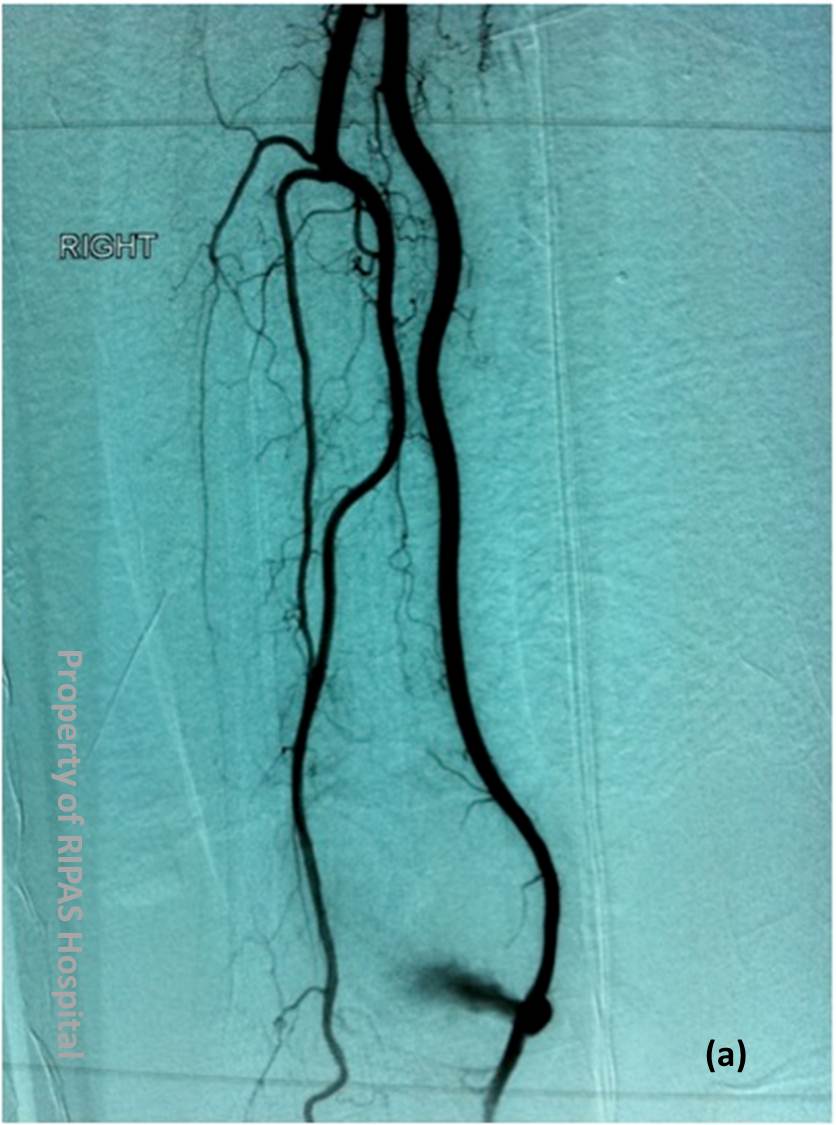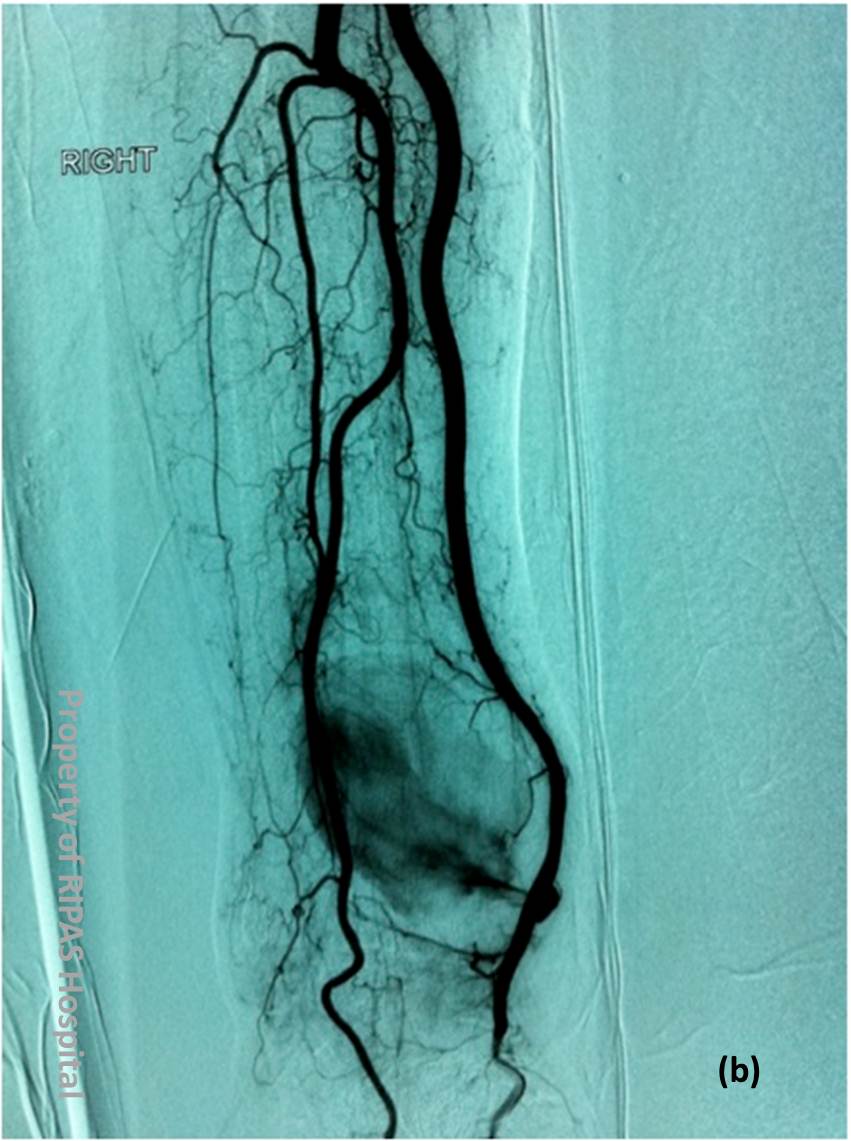IMAGE OF THE WEEK 2012
WEEK 1
VASCULAR INJURY
FOLLOWING DOG BITE
|
 |
 |
|
|
Figure 1:
Angiogram showing
arterial spurt of contrast into the surrounding tissue from the distal
radial artery in the wrist following a dog bite (a), and due to delay in
seeking medical treatment, resulting in formation an expanding and
pulsatile lump, typical of a pseudoaneurysm (b). (Click on image to enlarge) |
|
The incidence of vascular injury following dog bite has been
reported to be about 11.6%, majority of which occurs in the extremities (9.3%).
(1) The puncture mark on the skin can be small and in most cases sealed by the
time the victim present for medical attention. Any history of initial bleeding
particularly of arterial spurt immediately after the dog bite should warrant a
careful examination of the wound and even an angiogram if the suspicion of
vascular injury is high, although only 28% of routine angiograms of suspected
vascular injury following dog bite demonstrated significant arterial vascular
injuries. (2)
Delay in seeking treatment as in this case or a missed diagnosis
of vascular injury resulting from a dog bite, may lead to the formation of a
pseudoaneurysm as in this case or more commonly an occlusion of the vessel.
Infection risk is in the order of 3-17%. (3)
Management of any dog attacked victims must include an initial
primary survey for any immediate life threatening injuries, and all wounds
should be examined carefully for any skin loss, joint penetration, and tendon,
nerve or vascular injuries. Treatment will include thorough cleansing of all
wounds, wound debridement performed if required.
(4) Tetanus injection should be given. However, only 10.5% of vascular injury
requires an immediate operation to repair the punctured vessel. Antibiotics
should be given only on indication such as hand wounds, puncture deep wounds and
in immune compromised patients.
(3)
References
1. Benfield R, Plurad DS, Lam L, Talving P, Green DJ, Putty B, et al. The
epidemiology of dog attacks in an urban environment and the risk of vascular
injury. Am Surg. 2010 Feb;76(2):203–5.
2. Snyder KB, Pentecost MJ. Clinical and angiographic findings in
extremity arterial injuries secondary to dog bites. Ann Emerg Med. 1990
Sep;19(9):983–6.
3. de Melker HE, de Melker RA. [Dog bites: publications on risk factors,
infections, antibiotics and primary wound closure]. Ned Tijdschr Geneeskd. 1996
Mar 30;140(13):709–13.
4. Young S. Dog attacks. Aust Fam Physician. 1997 Dec;26(12):1375–7.
Image and text contributed and prepared by
Mr Chee Fui Chong, Department of
Surgery, RIPAS Hospital,
Brunei Darussalam.
All
images are copyrighted and property of RIPAS Hospital.


